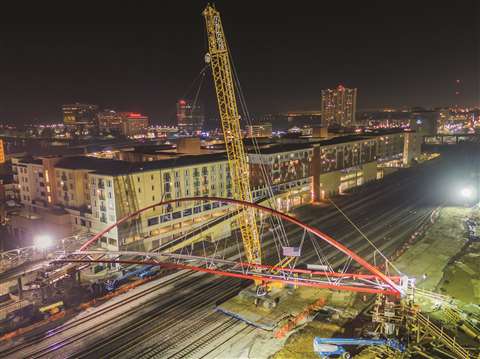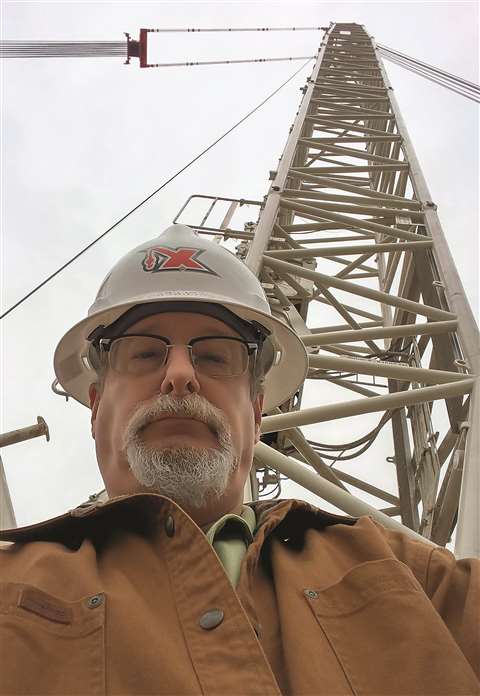The importance of weight accuracy in lift planning
13 July 2022
Obviously, knowing the weight of a load that you are planning to lift is of critical importance. Unfortunately, this value is too often either poorly known or poorly conveyed.
 It is vitally important that the planner know the exact value of the load as it will be lifted. Photo: Bigge Crane & Rigging
It is vitally important that the planner know the exact value of the load as it will be lifted. Photo: Bigge Crane & Rigging
When given the lift requirements, it is important that an accurate weight is provided.
This should be a documented value. You want to avoid being trapped in an old game of “telephone” where the information has propagated through a relay of individuals. If the load is newly manufactured, then the fabricator’s drawing is almost certain to exist. All that one has to do is ask for it.
If the load is an old piece of equipment being replaced or demolished then the client should make all reasonable efforts to find an existing set of prints. The weight is the single most important piece of information that one needs to know when executing a safe and efficient lift. If it is not accurately known, then you as the planner are starting off the design process at a disadvantage.
Maybe they were confusing operating weight with shipping weight. Operating weight may include the weight of fluids; shipping weight is empty. Perhaps they forgot about the additional weight of dunnage or were adding it in when the lift will happen without the dunnage. Are attachments such as railings, brackets, stairways, etc. included in the weight? Should they be?
Net versus gross
I was recently working on the planning of a heavy lift that was approaching the lift capacity of the (large Manitowoc) crane. I accounted for everything: the rigging weight was well known, the weight of the hoist lines was included (as required for a Manitowoc crane), hook block, auxiliary line and block, as well as a several percent contingency weight. I had originally obtained the payload weight from the fabricator’s drawings, but the contractor had removed some members, thus lightening the load. The crane operator gave him the weight from measurement using the crane’s instrumentation. That was conveyed to me as the new value to use for the payload weight. After days of unsuccessfully evaluating scenarios to get this crane in a position to make the lifts, the client told me that the load value given to me was the raw value from the LMI, in other words it was the gross load on the crane. I needed (and thought that I had been given) the net weight – the weight of the payload. With this error corrected, I was able to successfully complete the plan.
It is vitally important that the planner know the exact value of the load as it will be lifted.
Lift planning strategies
What can the Lift Planner do to help make certain that he or she has the correct lift weight for the payload? Here are a few suggestions:
- Do not take anyone’s word for it. Ask to see documents. The payload represents a substantial investment for its owner. A set of plans was created by its fabricator. You need to see them. Ask. If necessary, insist. The fabricator’s drawings are usually also a good source for lifting point details as well as the center of gravity location.
- Ask if anything additional will be attached to the load (legs, stairways, brackets, etc.). The fabricator may require special braces, frames or struts to be installed prior to lifting. (This is another good reason to consult the fabricator’s drawings.) Sometimes the client may be planning to remove items from the equipment before making the lift. If so, has the weight been adjusted to reflect these changes?
- Somewhere on your plans, indicate exactly where you obtained the weight from. e.g.: “The value for the weight of the load was taken from Acme Fabrication Company drawing number M64-3678, revision 2 dated 17 June 2021.”
- Always add a contingency weight. Show this value in your lift data table along with all of your other weights. If you have a good value for the weight from the fabricator’s drawing a contingency value as low as 1 percent may be appropriate. This could account for fabrication tolerances. If the crane is one of two cranes performing a tandem lift, a contingency of 3-10 percent would be a good idea to account for error in your load sharing estimate. If you are lifting an item as part of a demolition project, a contingency of 10-20 percent would be in order to account for accumulated debris and/or items that had been attached to the equipment over time. As uncertainties are clarified as the planning progresses (e.g.: a demo project where recent inspection shows less debris than expected) you may wish to reduce the contingency value. Do not arbitrarily add to the value of your load’s weight in an effort to be conservative. Doing so will cause you to lose track of your actual weight. If you want to add on to your weight, do it explicitly, and add it as part of your contingency weight.

Geoffrey H. Goldberg is a senior project engineer at Maxim Crane Works. Previously, he spent 20 years designing bridges in Pittsburgh, PA, the “city of bridges.” He is the author of Bridges: A Postcard History.
STAY CONNECTED


Receive the information you need when you need it through our world-leading magazines, newsletters and daily briefings.
CONNECT WITH THE TEAM







